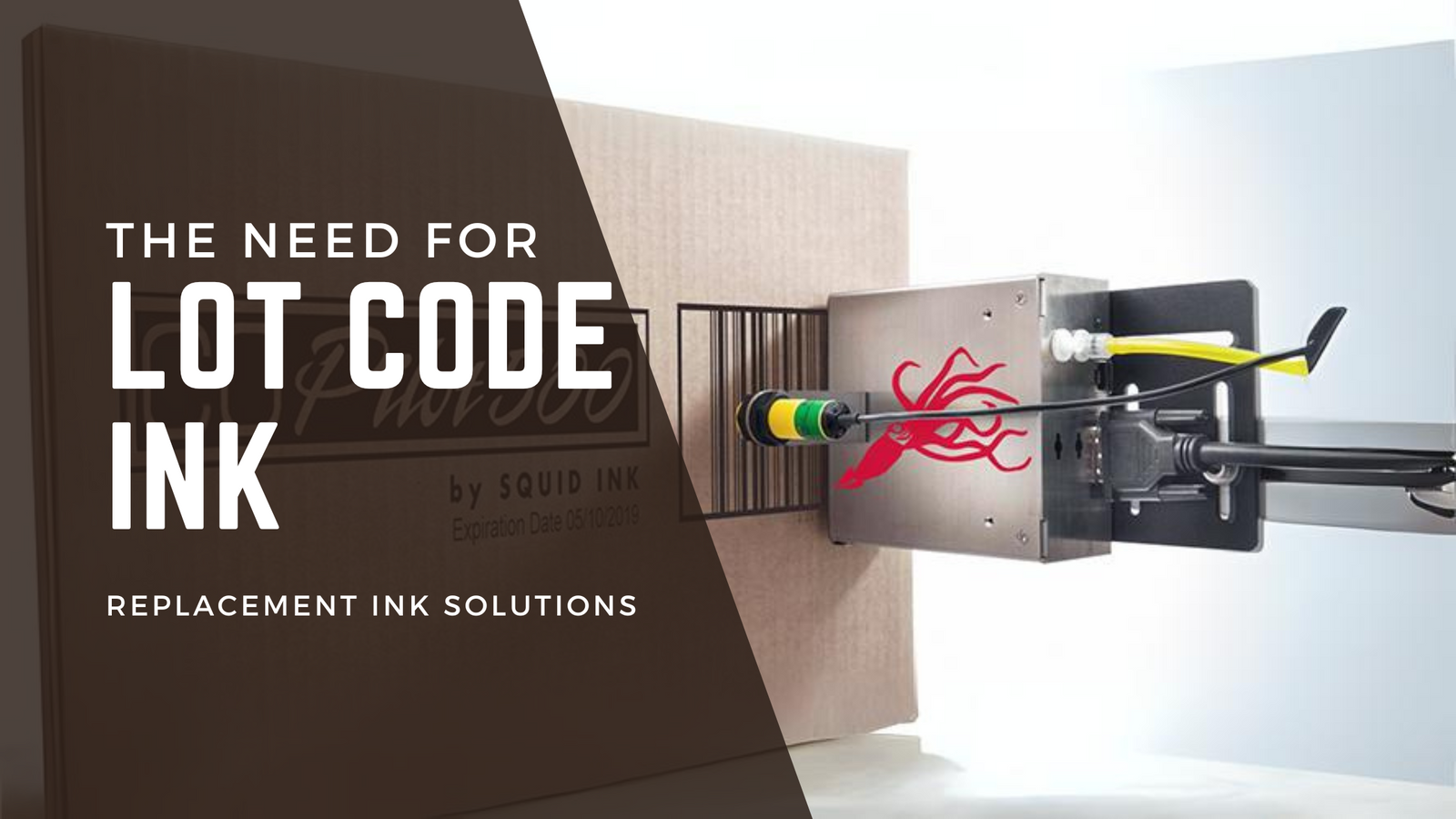Lot Code Ink, Lot Number Ink, and Date Code Inks in Product Labeling

In the world of product manufacturing and distribution, ensuring the safety and traceability of goods is paramount. One of the key elements in achieving this is the effective use of lot code ink, lot number ink, and date code inks. These specialized inks are crucial in labeling products, allowing manufacturers to monitor and trace their items, from production to delivery. In this article, we will delve into the significance of these inks and how they contribute to product quality, safety, and compliance.
Businesses must have industrial printers and high-performance industrial ink.
Lot Code Ink
The Backbone of Traceability
Lot code ink, also known as batch code ink or manufacturing date ink, is a unique ink designed for marking products with a specific batch or lot number. This batch number represents a group of products manufactured together under identical conditions. The significance of lot code ink in product labeling cannot be overstated. Here's why it's crucial:
1.1 Traceability
Lot code ink is the foundation of traceability in the manufacturing industry. It enables manufacturers to identify and trace products back to their production lot. In the event of a product recall or quality issue, manufacturers can quickly identify the affected lot and take appropriate actions.
1.2 Compliance
Regulatory agencies often require manufacturers to include lot codes on their products. This compliance ensures that in case of a recall or safety concern, the specific batch or lot can be easily identified, minimizing potential harm to consumers.
1.3 Quality Control
Lot code ink helps in quality control by allowing manufacturers to monitor the performance of products from specific production lots. By tracking lot numbers, manufacturers can detect patterns and address quality issues promptly.
Lot Number Ink
Essential for Inventory Management
Lot number ink is a variant of lot code ink, primarily used for labeling and managing inventory. Lot numbers are critical for efficient inventory control, and here's why lot number ink is indispensable in this context:
2.1 Inventory Management
In the complex world of product distribution, inventory management is a core element. Lot number ink enables companies to monitor stock levels, track expiration dates, and reduce waste by identifying and utilizing products with the earliest expiration dates first.
2.2 Product Rotation
In industries like food and pharmaceuticals, where product freshness is essential, lot number ink helps ensure products are rotated correctly. It ensures that older products are used or sold before newer ones, reducing the risk of product spoilage.
2.3 Reduced Shrinkage
By using lot number ink for inventory management, businesses can better control their stock and reduce shrinkage due to mismanagement or loss. This leads to cost savings and improved profitability.
Date Code Inks
Ensuring Freshness and Safety
Date code inks are designed for marking the manufacturing or expiration date on products. These inks play a vital role in ensuring product freshness and safety, and here's how:
3.1 Freshness Assurance
Date code inks are instrumental in maintaining the quality and freshness of products. Consumers rely on date codes to make informed choices about the products they purchase, ensuring they consume safe and fresh items.
3.2 Regulatory Compliance
In various industries, especially food and pharmaceuticals, regulatory agencies mandate the use of date codes on packaging. This is to guarantee that products are consumed within their intended shelf life, reducing the risk of spoilage and potential health hazards.
3.3 Brand Reputation
For brands, using date code inks to display expiration dates not only ensures safety but also maintains brand reputation. Transparent and accurate date coding reflects positively on the company, building trust with consumers.
Choosing the Right Ink for Your Needs
Selecting the appropriate lot code ink, lot number ink, or date code ink is crucial for effective product labeling. Here are some factors to consider when making your choice:
4.1 Substrate Compatibility
Ensure that the ink you choose is compatible with the material of your product's packaging. Different inks work better on various surfaces, such as paper, plastic, glass, or metal.
4.2 Printing Technology
Consider the printing technology you're using. Whether it's inkjet, laser, thermal transfer, or any other method, make sure the ink refill is suitable for your equipment and application.
4.3 Environment and Industry
Environmental factors and the industry you operate in can influence your choice of ink. For instance, if your products are exposed to moisture or extreme temperatures, you'll need an ink that can withstand such conditions.
4.4 Regulatory Requirements
Different industries have specific regulations regarding product labeling. Ensure that the ink you choose complies with these regulations to avoid potential compliance issues.
Lot code ink, lot number ink, and date code inks are fundamental elements in the world of product labeling. These inks provide manufacturers with the tools they need to ensure product traceability, quality control, inventory management, and consumer safety. By choosing the right industrial ink for their specific needs, businesses can enhance their operations, build trust with consumers, and meet regulatory requirements.
In an increasingly competitive market, product labeling is not just a legal requirement; it's a strategic necessity. Businesses that invest in the right lot code ink, lot number ink, and date code inks are better equipped to succeed, ensuring their products are fresh, safe, and easily traceable. Make the right choice in ink, and your business will reap the benefits of improved efficiency, safety, and consumer satisfaction.

